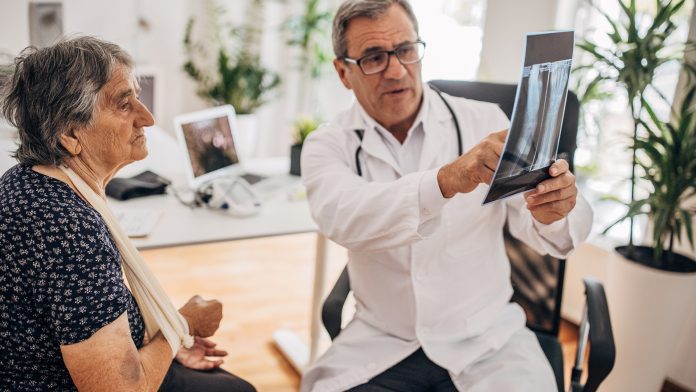
According to research from the Garvan Institute of Medical Research, older people who suffer a bone fracture are more likely to experience worse general health outcomes than those without.
The study, which analysed data from 30,000 Danish people aged 50 or older, found patients who had suffered a bone fracture in the centre of the body had a higher mortality rate than those who had not. The research also showed that people who had fractures combined with multiple or complex health conditions had an even higher mortality rate.
The researchers identified certain clusters of conditions that were linked to increased mortality rates. This information could be used by clinicians to identify patients who may need more intensive care.
The study has been published in the journal Jama Network Open.
The findings could lead to a new approach to bone fracture treatment
“This is an important study that could really change the way in which we provide medical treatment to older adults. It can potentially be a new way of thinking about how we view people with fractures, considering the site of fracture in light of their specific underlying health conditions,” said Professor Jacqueline Center, Head of the Clinical Studies and Epidemiology lab and lead author of the study.
Typically, conditions such as osteoporosis, heart disease, and diabetes are treated in isolation. These new findings suggest that considering clusters of underlying conditions could help identify patients with a higher risk of poor health outcomes and may be more effectively managed if treated together.
The researchers found they could group the bone fracture patients into five groups for men and four for women, based on their health conditions: a relatively healthier group with generally only one or no health conditions, a cardiovascular group, a diabetic group, and a cancer group with an additional liver/inflammatory group for men.
“It is not good enough to count other illnesses. Their severity and their combinations must also be taken into account. Many patients with a history of prior cancers, for example, were not in what we call the cancer cluster, but the cancer cluster included virtually all those who had evidence of advanced cancer. The same kind of sorting by severity was observed in the other clusters as well,” said visiting scientist, Robert Blank.
The researchers found that a bone fracture closer to the bone, such as on the hip, vertebrae, or upper arm was associated with a higher risk of mortality. Contrastingly, patients in the healthy group who had fewer central fractures, such as on the hands or forearms recorded virtually no increase in mortality rate.
Fractures associated with a higher risk of death
The presence of specific clusters of medical conditions in patients was associated with an enhanced chance of death if the patient had a bone fracture, compared to when the conditions were present without a bone fracture. For example, the mortality rate following a hip fracture in men with the cancer cluster was 41% higher than in those with no fracture.
“This research highlights that there is an interaction between the fracture and a patient’s cluster of health conditions – their underlying health – and that this could be a good way to identify at-risk people,” said Dr Thach Tran, first author of the study.
“We can identify people who will likely fare poorly. Importantly, the findings from this research may be applicable to many disease settings in which sentinel events occur with pre-existing health disorders.”
It is not yet understood why the combination of bone fractures and underlying health conditions is associated with poor health conditions. Professor Center has speculated that there may be a link between bones and the immune system.
“Bone is not inert. When you break a bone, you get increased bone turnover and associated inflammatory factors and I suspect that in underlying diseases, this process is not well controlled and a fracture may fuel underlying health issues,” explained Professor Center.









